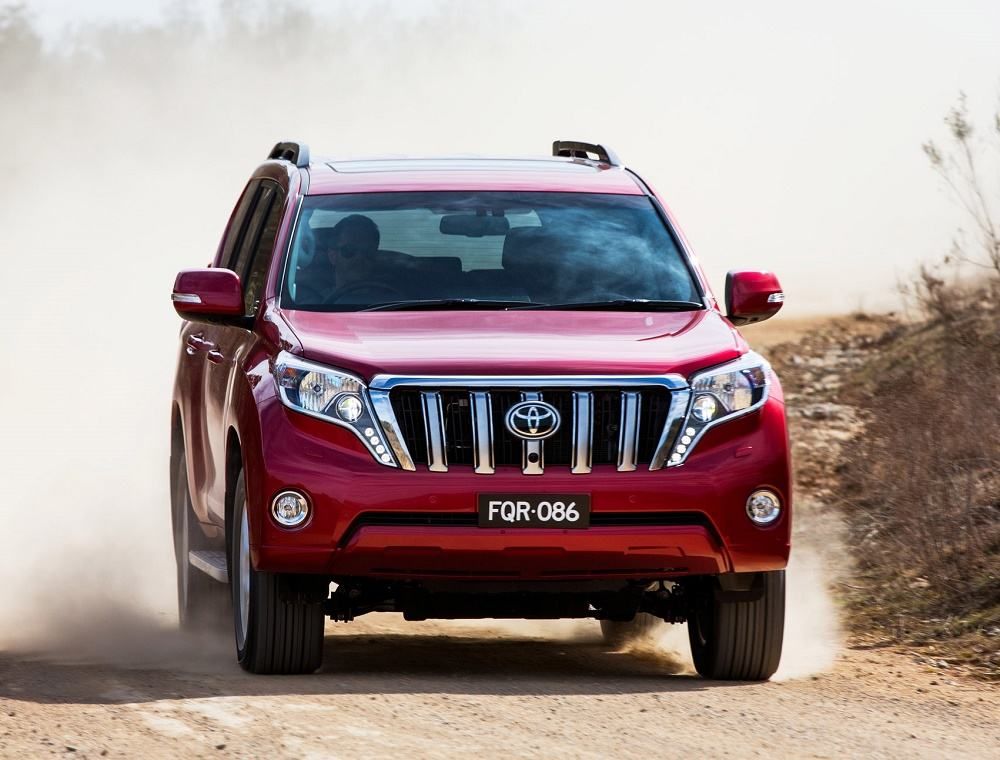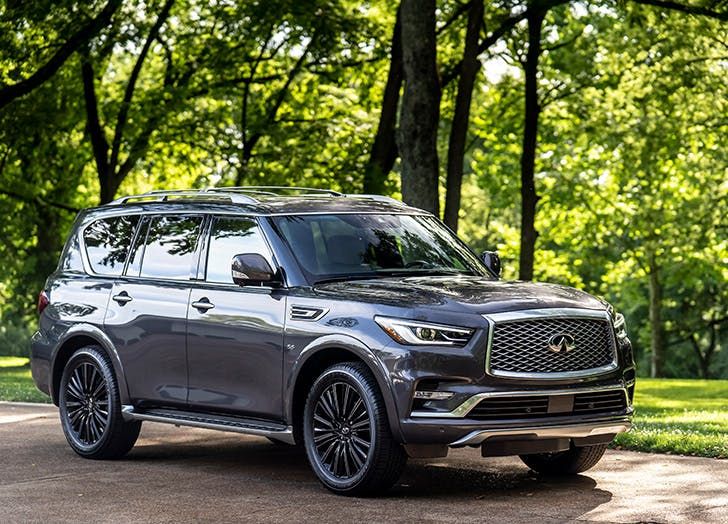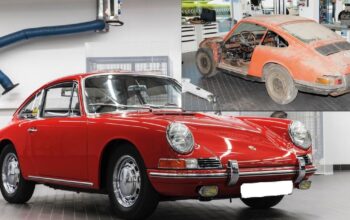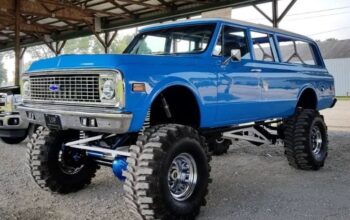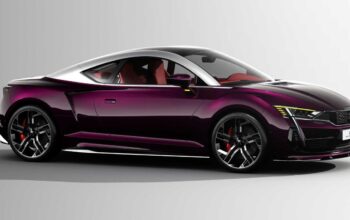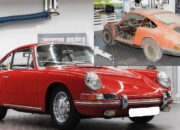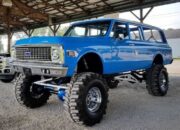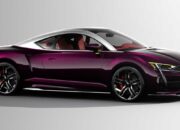The automotive landscape is in a state of perpetual flux, yet one segment consistently stands out, demonstrating remarkable resilience and an unwavering trajectory of growth: the Sport Utility Vehicle (SUV). What began as a niche offering has evolved into the undisputed titan of the global automotive market, reshaping consumer preferences, driving manufacturing strategies, and setting the pace for innovation across the industry. This article delves into the multifaceted reasons behind the sustained dominance of SUVs, exploring their evolution, consumer appeal, technological integration, economic impact, and the future trends that promise to solidify their reign for years to come.
The Genesis and Evolution of a Segment
To truly understand the current supremacy of the SUV, it’s essential to trace its lineage. The concept of a versatile vehicle capable of handling both on-road comfort and off-road ruggedness is not entirely new. Early ancestors can be found in military vehicles and utilitarian off-roaders like the Jeep Willys or the original Land Rover. These were primarily designed for function over form, serving specific professional or adventurous needs.
The real transformation began in the late 20th century, particularly in the 1980s and 1990s, when manufacturers started blending the robust utility of these vehicles with the comfort and features of passenger cars. The advent of models like the Jeep Cherokee XJ, Ford Explorer, and Toyota RAV4 marked a pivotal shift. These vehicles offered:
A. Increased ride height: Providing a commanding view of the road, a psychological benefit that resonated strongly with drivers. B. All-wheel drive (AWD) or four-wheel drive (4WD) options: Offering enhanced traction and perceived safety in diverse weather conditions. C. Spacious interiors: Accommodating families, cargo, and active lifestyles more effectively than traditional sedans. D. A rugged yet refined aesthetic: Projecting an image of adventure, capability, and practicality.
The initial success of these “soft-roaders” or “crossovers” paved the way for an explosion in variety. Today’s SUV market is incredibly diverse, ranging from compact urban crossovers to mid-size family haulers, and from luxurious high-performance vehicles to full-sized, body-on-frame giants. This diversification has allowed SUVs to infiltrate nearly every segment once dominated by sedans, wagons, and even minivans.
Unpacking the Irresistible Consumer Appeal
The sustained dominance of SUVs is not a mere coincidence; it’s a direct reflection of their profound resonance with contemporary consumer demands and aspirations. Several key factors contribute to their magnetic appeal:
A. Perceived Safety and Security
One of the most frequently cited reasons for choosing an SUV is the feeling of safety and security it imparts. The elevated seating position provides drivers with a superior vantage point, enhancing visibility and situational awareness. Furthermore, the larger mass and often taller stature of SUVs lead many consumers to believe they offer greater protection in the event of a collision compared to lower-slung sedans. While crash safety depends on numerous design factors and not just size, the psychological comfort derived from this perception is undeniably powerful. Modern SUVs are also equipped with advanced safety features, including multiple airbags, stability control, traction control, and an increasing array of driver-assistance systems (ADAS) like automatic emergency braking, lane-keeping assist, and blind-spot monitoring, further bolstering their safety credentials.
B. Versatility and Practicality
SUVs are the chameleons of the automotive world, adapting seamlessly to a multitude of lifestyles. Their inherent versatility is a major draw:
- Cargo Capacity: The hatchback-like rear opening and often foldable rear seats provide expansive and flexible cargo space, ideal for groceries, sports equipment, luggage for family trips, or even moving small furniture. This adaptability far surpasses the limited trunk space of traditional sedans.
- Passenger Comfort: Many SUVs offer comfortable seating for five to seven passengers, making them ideal for families. The higher roofline often translates to better headroom, and the wider body can mean more shoulder room, enhancing long-journey comfort.
- All-Weather Capability: While not all SUVs are true off-roaders, the availability of AWD or 4WD systems provides peace of mind in adverse weather conditions like snow, rain, or muddy roads, offering enhanced traction and stability. Even basic crossovers with front-wheel drive often have higher ground clearance, allowing them to navigate uneven terrain or speed bumps with greater ease.
- Towing Capacity: Many mid-size and full-size SUVs offer respectable towing capacities, allowing owners to pull trailers, boats, or campers, catering to adventurous hobbies and recreational activities.
C. Aesthetic Appeal and Image
Beyond pure practicality, the visual appeal of SUVs plays a significant role in their market success. They project an image of adventure, capability, freedom, and modernity. Their bold styling, muscular stance, and often aggressive front fascias appeal to a broad demographic looking for a vehicle that reflects an active and contemporary lifestyle. Manufacturers have also become adept at blending ruggedness with sophistication, offering sleek designs, premium finishes, and stylish interior appointments that elevate the SUV beyond a mere utility vehicle to a statement of personal style. The aspirational aspect of owning an SUV cannot be overstated, as they often symbolize success and the ability to pursue diverse activities.
D. Driving Dynamics and Comfort
Modern SUVs have made significant strides in replicating the driving comfort and refinement of sedans. While earlier models might have felt truck-like, today’s crossovers, built on unibody platforms (similar to cars), offer:
- Car-like Handling: Improved suspension systems, precise steering, and advanced chassis tuning have made many SUVs surprisingly nimble and enjoyable to drive, even in urban environments.
- Quiet Interiors: Extensive sound deadening and aerodynamic advancements have resulted in quieter cabins, enhancing the overall driving experience.
- Comfortable Ride: The often longer wheelbases and sophisticated suspension setups contribute to a smooth and comfortable ride, even over rougher roads.
This blend of command driving position with comfortable, car-like dynamics has struck a perfect balance for many consumers.
Technological Integration: The Smart SUV
The SUV segment has been a leading adopter and innovator in automotive technology, further cementing its appeal. Modern SUVs are veritable mobile command centers, packed with features that enhance safety, connectivity, and convenience.
A. Advanced Driver-Assistance Systems (ADAS)
The proliferation of ADAS features has become a standard expectation, particularly in SUVs. These systems leverage an array of sensors, cameras, and radar to assist the driver and prevent accidents:
- Automatic Emergency Braking (AEB): Detects potential frontal collisions and applies brakes automatically if the driver doesn’t react.
- Lane-Keeping Assist (LKA) and Lane Departure Warning (LDW): Help keep the vehicle within its lane and alert the driver if it drifts.
- Blind-Spot Monitoring (BSM): Warns the driver of vehicles in their blind spots.
- Adaptive Cruise Control (ACC): Maintains a set speed and a safe following distance from the vehicle ahead.
- 360-Degree Camera Systems: Provide a bird’s-eye view of the vehicle’s surroundings, making parking and maneuvering in tight spaces much easier.
- Parking Assist Systems: Can automatically steer the vehicle into parallel or perpendicular parking spots.
These technologies not only enhance safety but also reduce driver fatigue, contributing to a more relaxed and confident driving experience.
B. Infotainment and Connectivity
The demand for seamless integration of digital life into the vehicle has led to sophisticated infotainment systems in SUVs:
- Large Touchscreens: Dominant central displays provide access to navigation, media, climate control, and vehicle settings.
- Smartphone Integration: Apple CarPlay and Android Auto are almost universally offered, allowing drivers to mirror their phone’s interface for navigation, music, and messaging.
- In-Car Wi-Fi Hotspots: Provide internet connectivity for all occupants, turning the vehicle into a mobile office or entertainment hub.
- Over-the-Air (OTA) Updates: Enable manufacturers to update software, add new features, and even fix issues remotely, keeping the vehicle’s technology current without a trip to the dealership.
- Voice Control: Advanced voice recognition systems allow drivers to control various functions without taking their hands off the wheel.
C. Powertrain Diversity: From ICE to Electric
The SUV segment has also been at the forefront of powertrain innovation. While traditional gasoline engines still dominate, there’s a rapid acceleration towards electrification:
- Efficient Internal Combustion Engines (ICE): Modern gasoline and diesel engines in SUVs are more fuel-efficient and produce fewer emissions than their predecessors, thanks to turbocharging, direct injection, and mild-hybrid technologies.
- Hybrid Electric Vehicles (HEVs): Combine a gasoline engine with an electric motor to improve fuel economy, particularly in city driving.
- Plug-in Hybrid Electric Vehicles (PHEVs): Offer a larger battery and an electric motor that can power the vehicle solely on electricity for a significant range before the gasoline engine kicks in.
- Battery Electric Vehicles (BEVs): Fully electric SUVs are rapidly gaining market share, offering zero tailpipe emissions, instant torque, and a quieter driving experience. Major manufacturers are launching electric SUV models across all price points, from compact urban crossovers to large luxury electric cruisers, indicating a clear future direction for the segment.
This diversity in powertrain options allows consumers to choose a vehicle that aligns with their environmental concerns, driving habits, and budget, ensuring the SUV remains relevant in an increasingly eco-conscious world.
Economic and Manufacturing Implications
The global shift towards SUVs has profound implications for the automotive industry’s economics, manufacturing processes, and workforce.
A. Higher Profit Margins
For automakers, SUVs generally command higher profit margins compared to sedans or hatchbacks. This is due to several factors:
- Premium Pricing: Consumers are often willing to pay more for the perceived benefits of SUVs, including their versatility, higher seating position, and often more extensive features.
- Shared Platforms: Many SUVs share platforms and components with sedans or other models within a manufacturer’s lineup. This platform commonality allows for economies of scale in design, engineering, and manufacturing, reducing development costs per unit while still selling at a higher price point.
- Opportunity for Upselling: The modular nature of SUVs allows manufacturers to offer a wide array of trims, optional packages, and accessories, which further boost profitability.
This higher profitability incentivizes manufacturers to prioritize SUV development and production, allocating significant R&D budgets and marketing efforts to the segment.
B. Manufacturing Reorientation
The pivot to SUVs has led to a significant reorientation of manufacturing facilities worldwide. Production lines once dedicated to sedans have been retooled or replaced to accommodate SUV production. This involves:
- Investment in new tooling: Required to stamp larger body panels and assemble different chassis structures.
- Rethinking logistics: Larger vehicles require more space for transport and storage.
- Workforce retraining: Employees need to be trained on new assembly processes and technologies specific to SUV manufacturing.
This retooling represents billions of dollars in investment, underscoring the industry’s long-term commitment to the SUV market.
C. Impact on Legacy Segments
The rise of the SUV has come at the expense of traditional passenger car segments. Sedans, once the backbone of many manufacturers’ lineups, have seen their market share dwindle significantly, particularly in North America and increasingly in other regions. Minivans, too, have largely been supplanted by family-friendly SUVs. This has led to some manufacturers discontinuing sedan models entirely in certain markets to focus resources on more profitable SUV and truck segments. While some niche sedan markets persist, the overall trend is undeniable: the SUV is king, and other segments are adapting or receding.
Future Trajectories: What’s Next for SUVs?
The dominance of the SUV is not expected to wane anytime soon; rather, it’s poised for further evolution and entrenchment, driven by ongoing innovation and shifting global priorities.
A. Continued Electrification
The transition to electric vehicles (EVs) will disproportionately impact the SUV segment. Consumers are increasingly demanding electric options, and SUVs offer several advantages for EV platforms:
- Larger Battery Capacity: The larger footprint of SUVs allows for the integration of bigger battery packs, providing longer ranges, which is a key concern for EV adoption.
- Versatile Design: The inherent design of SUVs lends itself well to housing electric drivetrains, which are often more compact than traditional ICE setups, freeing up interior space.
- High Demand: Given the existing consumer preference for SUVs, manufacturers are prioritizing electric SUV development to meet market demand and emissions regulations. Expect a surge in innovative electric SUV designs, ranging from compact crossovers to luxurious full-size models, with advanced charging capabilities and extended ranges.
B. Deeper Integration of Autonomous Driving
While fully autonomous vehicles are still some years away, SUVs will likely be at the forefront of this revolution. Their larger size provides more space for sensors, cameras, and computing power required for advanced autonomous systems. As regulatory frameworks and technology mature, SUVs will increasingly offer higher levels of autonomous driving capabilities, transforming the commuting experience and potentially opening up new use cases for personal mobility.
C. Enhanced Customization and Personalization
As the SUV market becomes more saturated, manufacturers will seek to differentiate their offerings through increased customization and personalization options. This could include:
- Modular Interiors: Allowing owners to reconfigure seating and cargo layouts based on their immediate needs.
- Digital Personalization: Customizable digital dashboards, ambient lighting, and personalized driving modes.
- Subscription Features: Offering certain features or performance upgrades via over-the-air subscription services.
- Diverse Trim Levels: An even wider array of aesthetic and functional packages to cater to individual tastes, from rugged off-road variants to sleek urban performers.
D. Focus on Sustainability Beyond Powertrains
Beyond electrification, there will be a growing emphasis on overall sustainability in SUV manufacturing. This includes:
- Sustainable Materials: Increased use of recycled plastics, bio-based materials, and responsibly sourced resources in interior and exterior components.
- Circular Economy Principles: Designing vehicles for easier recycling and reuse of components at the end of their life cycle.
- Eco-Friendly Manufacturing Processes: Reducing energy consumption, water usage, and waste in production facilities.
Consumers are increasingly valuing environmentally conscious brands, and SUVs, despite their size, will need to align with these values to maintain their appeal.
E. Global Market Growth
While mature markets like North America and Europe have largely transitioned to SUV dominance, emerging markets in Asia, Africa, and Latin America are still seeing significant growth potential. As incomes rise in these regions, the aspiration for versatile, modern vehicles often translates directly into demand for SUVs. This global expansion will continue to fuel the segment’s overall growth trajectory.
Conclusion
The continued dominance of the SUV market is not a fleeting trend but a deeply entrenched phenomenon driven by a confluence of consumer preferences, technological advancements, and economic realities. From their humble beginnings as utilitarian workhorses, SUVs have evolved into sophisticated, versatile, and technologically advanced machines that perfectly encapsulate the needs of the modern driver. They offer a compelling blend of safety, practicality, emotional appeal, and cutting-edge innovation that no other vehicle segment can consistently match across such a broad spectrum of price points and sizes.
As the automotive industry hurtles towards an electric, connected, and increasingly autonomous future, the SUV segment is not just adapting; it is leading the charge. Its inherent flexibility in design and engineering makes it an ideal platform for new technologies, ensuring its continued relevance and appeal. Manufacturers will continue to pour resources into this lucrative segment, developing even more specialized, efficient, and intelligent offerings. The reign of the crossover and SUV is not merely continuing; it is solidifying, making these versatile vehicles the undeniable cornerstone of personal mobility for the foreseeable future.

